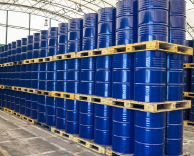Hydraulic Oil Grades Explained: How to Choose the Right Viscosity for Your Equipment
Introduction to Hydraulic Oil Grades
Hydraulic oil plays a crucial role in machinery, ensuring smooth power transmission, lubrication, and heat dissipation. Choosing the right hydraulic oil grade is essential to maintain efficiency, reduce wear, and prevent system failures.
Hydraulic systems operate under high pressures and temperatures, making the correct selection of hydraulic oil vital. The right oil reduces friction, minimizes energy losses, and extends component life. Understanding hydraulic oil grades allows users to make informed decisions that optimize machine performance and prevent costly breakdowns.

Understanding Viscosity in Hydraulic Fluids
Viscosity is the most important characteristic of hydraulic oil. It determines the fluid's resistance to flow and directly impacts lubrication performance. If the viscosity is too low, excessive wear and leakage may occur. If it's too high, the system may experience sluggish operation and increased energy consumption.
Viscosity is measured in centistokes (cSt) at a standard temperature of 40°C. A hydraulic oil’s viscosity must match the equipment's operational requirements to ensure optimal flow and efficiency. A high viscosity index (VI) means that the oil maintains its properties across varying temperatures, making it suitable for extreme weather conditions.
For More Information About - Click Here.
Hydraulic Oil Classification Systems
Hydraulic oils are classified based on their viscosity, additive formulation, and application-specific requirements. Here are the most commonly used classification systems:
ISO Viscosity Grades (ISO VG)
The ISO VG system categorizes hydraulic fluids based on their viscosity at 40°C. Common ISO grades include ISO VG 32, 46, 68, and 100, with higher numbers indicating thicker oil. For example:
- ISO VG 32 – Used in cold environments and light-duty applications
- ISO VG 46 – Ideal for industrial machinery and moderate climates
- ISO VG 68 – Preferred for high-temperature and high-load systems
- ISO VG 100 – Used in extreme industrial applications with heavy loads
SAE Viscosity Grades
The Society of Automotive Engineers (SAE) defines viscosity grades mainly for automotive applications. Some hydraulic systems, especially those in mobile equipment, use SAE-rated fluids like SAE 10W, 20W, or 30W. These grades indicate the oil's performance under cold start conditions and operating temperature stability.
AW, R&O, and Other Hydraulic Oil Types
- AW (Anti-Wear) Hydraulic Oil: Contains additives to reduce wear in high-pressure systems, improving pump life and efficiency.
- R&O (Rust and Oxidation) Inhibited Oil: Designed for systems requiring oxidation stability and rust prevention, commonly used in turbines and compressors.
- Biodegradable Hydraulic Fluids: Eco-friendly alternatives for environmentally sensitive applications such as forestry and marine industries.
Factors to Consider When Choosing Hydraulic Oil
Selecting the right hydraulic oil requires consideration of several factors:
- Operating temperature range: Ensures viscosity stability in extreme conditions.
- Pump and system requirements: Different pumps (gear, vane, piston) may require specific viscosities.
- Load and pressure levels: High-pressure systems need anti-wear hydraulic oils.
- Environmental impact: Biodegradable oils are recommended for eco-sensitive operations.
- Contaminant resistance: Some oils are formulated with superior detergency and oxidation stability to resist sludge buildup and varnish formation.
Impact of Temperature on Hydraulic Oil Selection
Temperature fluctuations affect hydraulic oil performance.
- Cold temperatures: Require lower viscosity oils to ensure easy startup.
- High temperatures: Need higher viscosity fluids to prevent thinning and loss of lubrication.
Viscosity index (VI) improvers help maintain stable viscosity across temperature changes, enhancing system efficiency. Some hydraulic fluids contain synthetic base stocks that offer better thermal stability and oxidation resistance, reducing the risk of degradation in extreme environments.
Common Hydraulic Oil Applications
Hydraulic fluids are used in various industries, including:
- Construction and mining equipment (excavators, loaders)
- Industrial machinery (presses, injection molding machines)
- Aviation and marine applications (aircraft landing gear, ship steering systems)
- Agricultural equipment (tractors, harvesters)
- Automotive and transportation (power steering, braking systems)
Each industry requires specific hydraulic fluids to meet operational demands, making proper selection crucial to efficiency and longevity.
Importance of Proper Hydraulic Oil Maintenance
Using the correct hydraulic oil is only half the battle—proper maintenance ensures long-term system efficiency. Regular oil analysis, contamination control, and scheduled replacements prevent performance degradation and equipment failures.
Best Practices for Hydraulic Oil Maintenance:
- Monitor oil cleanliness: Use filters and desiccant breathers to prevent contamination.
- Check viscosity regularly: Changes in viscosity can indicate oil degradation.
- Inspect for water contamination: Water reduces lubricating properties and accelerates wear.
- Follow OEM recommendations: Use the right oil grade and change intervals.
Implementing a proactive maintenance strategy extends hydraulic system life and minimizes unplanned downtime.
Conclusion
Selecting the right hydraulic oil grade is critical for optimal machinery performance and longevity. Understanding viscosity grades, classification systems, and environmental factors ensures smooth operations and prevents costly downtime. Proper maintenance further enhances equipment reliability and efficiency. Always follow OEM guidelines and consult experts for the best results.
Learn more about our services and industry insights by visiting our official LinkedIn page: Minimac Systems





